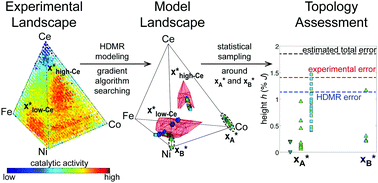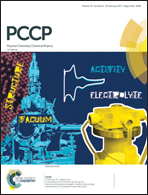Exploring experimental fitness landscapes for chemical synthesis and property optimization†
Abstract
Optimization is a central goal in the chemical sciences, encompassing diverse objectives including synthesis yield, catalytic activity of a material, and binding efficiency of a molecule to a target protein. Considering the enormous size of chemical space and the expected large numbers of experiments necessary to search through it in any particular application, optimization in chemistry is surprisingly efficient. This good fortune has recently been explained by analysis of the fitness landscape, i.e., the functional relationship between a target objective J (e.g., percent yield, catalytic activity) and a suitable set of variables (e.g., resources such as reactant concentrations and processing conditions). Mathematical analysis has demonstrated that, upon satisfaction of reasonable physical assumptions, the fitness landscape contains no local sub-optimal “traps” that preclude identification of the globally best value of J, in a development called the “OptiChem” theorem. One of the key assumptions behind the theorem is that sufficient resources are available to achieve the posed optimization goal. This work assesses the validity of this assumption underlying the OptiChem theorem through examination of experimental data from the recent literature. In order to explore fitness landscapes in high dimensions where the landscape cannot be visualized, a high dimensional model representation (HDMR) of experimental data is used to construct a model landscape amenable to topology assessment via gradient algorithm search. This method is shown to correctly capture the trap-free topology of a four-dimensional landscape where the objective is to optimize the composition of a solid state material (subject to an elemental mole-fraction constraint) for catalytic activity towards the oxygen evolution reaction. Analysis of a six-dimensional landscape for the objective of maximizing the photoluminescence of rare-earth solid state materials subject to two elemental mole-fraction constraints and a fixed set of processing conditions reveals the presence of one landscape trap, which likely arises from the significantly constrained elemental composition of the materials and/or the fixed processing conditions.



 Please wait while we load your content...
Please wait while we load your content...